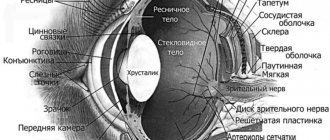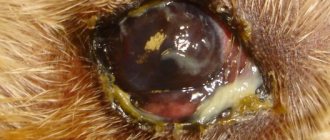Dark urine in a dog may indicate many internal diseases and inflammatory processes that occur in the body. If the dog also shows lethargy, then the pet must be urgently taken to a veterinary clinic so that the doctor can examine it and take action. If the owner leaves everything to chance, the pet faces significant health problems.
The breeder is advised to monitor his pet, since dark urine, as a rule, is not the only sign that poses a threat to the health of the animal. During the treatment process, the veterinarian will need to know all the details of the pet’s behavior and condition: its characteristics, activity, nutrition and much more. Sometimes such details can save your pet’s life in the most difficult situations.
Normal urine levels in a dog
Normally, a dog should have light-colored urine with a straw-like tint, a faint odor and a slight sediment. All these indicators can be easily checked using a paper test. To carry it out, you will need a transparent glass of urine and a white sheet, which must be placed opposite the collected liquid.
The kidneys are responsible for the excretion of urine, and urobilin, which is a breakdown product of bile pigment, or bilirubin, is responsible for its coloring. Most often, deviations from the norm occur due to disturbances in the functioning of the listed organs, that is, diseases of the urinary system.
What diseases cause dark urine?
If your dog's urine is dark in color, then most likely his body is dehydrated or suffering from internal bleeding. An independent solution to the problem is allowed only when fluid is lost due to too intense physical activity. In all other cases involving bleeding, the animal will require the help of a veterinarian.
Piroplasmosis due to a tick bite
The causative agents of this disease are tiny blood parasites, Babesia, transmitted by ixodid ticks. When a tick bites, the parasite enters the bloodstream along with saliva and captures red blood cells. There it evolves into an adult, which exits through the intestines to later infect or infect new blood cells.
Repeated repetition of this cycle leads to a significant increase in the number of Babesia and massive death of red blood cells, turning the urine brownish-yellow or completely black. Without timely assistance, an infected animal dies from brain hypoxia or acute intoxication of the body.
“
Read more about piroplasmosis in dogs
Urolithiasis disease
With urolithiasis (UCD), stones accumulate in the ureter - dense formations that interfere with the free movement of urine. Each urination is accompanied by damage to the mucous membrane, so the color of the dog’s urine becomes dark with blood.
Due to severe pain, the animal urinates less and less. If you stop urinating completely, there is a risk of bladder rupture, which can lead to death from poisoning.
“ More about ICD in dogs
Cystitis
The symptoms of cystitis overlap with ICD, so the pathologies are very often confused. They differ from each other in the reason for the reduction in daily urine volume. If stones are to blame for urolithiasis, then for cystitis it is inflammation of the mucous membrane, narrowing the passage in the urethra.
In most cases, the main culprits of the disease are bacteria that enter the bladder directly or through the bloodstream from neighboring organs. If left untreated, cystitis can be complicated by renal failure, peritonitis or pyelonephritis.
“ More about cystitis in dogs
Increased physical activity
Sometimes the cause of the disorder is the owner himself, who has gone too far with physical activity. When you exercise too vigorously, lactic acid forms in your muscles, causing acute pain. It serves as a defense mechanism and tells the body that it urgently needs to rest.
Ignoring this signal leads to an excess of lactic acid and muscle destruction, accompanied by the release of myoglobin. This protein compensates for the temporary lack of oxygen and gives urine a dark tint.
You can normalize your pet’s condition on your own by changing the training program to a more gentle one. Do not try to make a champion out of a dog if his health condition is far from normal. To maintain good physical shape, a simple game of ball or frisbee while walking will be enough.
Other color options
Red or pink urine is often caused by a urinary tract infection. But things are not always so bad. Hematuria is very typical for the postoperative period, and this is not considered a pathology. Of course, only in cases where the red color is observed for only a couple of days. If your urine turns dark red, you should call your veterinarian immediately, as such changes are highly likely to indicate serious internal bleeding.
In addition, red urine may be due to injury. For example, if your dog had a serious fall or was hit by a bicycle, his kidneys could be damaged. In most cases, this is relatively “normal”, but if the bleeding continues for several days, the intensity of the red color increases and the dog becomes lethargic, this is a serious reason to contact the veterinarian.
What pathologies cause a dog's urine to become bright yellow?
A rich, bright yellow hue, similar to ripe carrots, is produced by urobilin. The more it is in the urine, the richer its color will be. If there is a stable deviation from the norm, the dog should be shown to a veterinarian as soon as possible.
Problems with the gallbladder and bile ducts
Possible causes include cholecystitis, or inflammation of the gallbladder, and cholelithiasis, or blockage of the bile ducts. As a result of stagnation, the composition and density of bile undergo changes, and the contents of the gallbladder penetrate directly into the abdominal cavity.
Pathologies of the gallbladder and ducts lead not only to changes in the color of urine, but also to discoloration of feces. The skin and mucous membranes also turn yellow, and severe pain is noted in the right side. A sick animal whines when stroked and constantly lies on its stomach, trying not to change its position.
Pancreatic diseases
The disorder in question is characteristic of pancreatitis - inflammation of the pancreas, accompanied by a failure of intrasecretory function. Due to a lack of enzymes, the digestion process is disrupted. This is accompanied by severe pain before and after feeding, diarrhea and vomiting of pieces of eaten food.
“ More about pancreatitis in dogs
Liver diseases
Liver pathologies are accompanied by increased thirst and frequent urination. Feces take on a black or light gray hue. A sick animal's coat quality deteriorates.
The most common diseases include hepatitis, hepatosis, liver failure, cirrhosis and liver cancer. What they all have in common is the presence of jaundice.
Taking certain medications and vitamins
Sometimes medications are to blame for yellowing. Vitamin B2, or riboflavin, gives the rich shade. All side effects must be indicated in the instructions for use, so do not be lazy to read it before use.
Remember that all medications and vitamins should be taken only as prescribed by a veterinarian. Otherwise, the cause of the color change may be incompatibility of the drugs with each other, which can lead to serious damage to the internal organs.
Types of liver damage
The liver is the main filter of the body. This organ primarily takes a hit from low-quality or toxic food products. There are two main types of gland lesions:
- Primary, caused by direct toxic or mechanical action (leptospirosis, parasites, pathogenic fungi).
- Secondary, the result of diseases of other organs (heart pathologies, injuries, hypoxia, the effects of toxic substances).
In the described case, we are talking about a possible secondary pathology that arose as a result of eating food that is not suitable for the dog’s body: salted herring contains an excess of salt and preservatives. In addition, any fish contains protein and phosphorus in huge amounts for the dog’s body, which puts a lot of strain on the liver and kidneys.
Associated symptoms
Problems in the body are indicated not only by the strange color of urine, but also by other symptoms. Be sure to fix them before going to the vet. This will help in making a diagnosis.
Urinating too often or too infrequently
Frequent urges are characteristic of urolithiasis and cystitis. With the usual daily routine, a sick pet will make puddles right at home, without waiting for a walk.
No less dangerous is urinating too rarely. By keeping everything inside, the dog increases the likelihood of his bladder rupturing.
Unusual smell
The specific smell of human and animal urine is similar, so it is quite easy to distinguish normal from pathology. The most common deviations include the smell of rot, acetone and ammonia.
Presence of suspension, flakes, blood, pus
A small amount of sediment is completely normal, but large flakes or clots of blood and pus are a serious cause for concern. Impurities may be released at the beginning or end of urination. This moment also needs to be recorded.
The amount of urine and the nature of its flow
Normally, a dog should excrete 20-40 ml of urine per 1 kg of weight. If the real indicator is less or more than this value, hurry up and get tested.
The nature of the outflow, that is, the immediate moment of emptying, is no less important. If there is a pathology, the pet will whine and take strange poses, and its stream will be too thin or intermittent.
Temperature increase
Normal body temperature depends on the age and size of the dog. In puppies it is 37.5-39°C, and in adult pets:
- 38.4-39.3°C – with a weight below 10 kg;
- 37.6-39°C – with a weight of 10-28 kg;
- 37.3-38.5°C – with a weight of more than 28 kg.
If you deviate from the norm, do not try to bring down the temperature with antipyretic drugs. They should only be used as directed by a veterinarian.
Important!
Human antipyretics can be extremely dangerous for a pet, even fatal.
How the kidneys work
Plasma purification occurs according to the following scheme:
- Blood enters the organ through the renal artery and leaves the renal vein.
- Poisons are filtered in nephrons, which are presented in the form of a huge number of microscopic units. Each nephron has a complex structure in the form of glomeruli (clusters of capillaries) and a system of tubules, enclosed in a capsule that protects it from external influences.
- After processing, the sifted toxins enter the renal pelvis, then the ureter and bladder.
- When the level of fluid in the bladder reaches a certain volume, it sends a signal to the brain that it is time to empty itself.
- A toilet-trained pet begins to behave restlessly and asks to go outside.
Thus, the kidneys remove the end products of nitrogen metabolism from the body - urea, ammonia, uric acid, purine bases. They cleanse the body of foreign and toxic compounds (including removing medications), excess fluid, and excess inorganic and organic substances.
Diagnosis and treatment of a pet
To make a diagnosis, it is necessary to undergo general and biochemical urine and blood tests, as well as undergo an ultrasound and x-ray. If necessary, the veterinarian may prescribe other tests to help identify the cause of the disease.
Treatment methods will depend on the type of pathology:
- Piroplasmosis
. In severe cases, filtration and blood transfusion are used. Babesia is destroyed with antiprotozoal drugs.
- ICD
. To dissolve the stones, the diet must be reviewed, and catheterization or surgery must be performed. Antibiotic therapy is used when a secondary infection is detected.
- Cystitis
. In emergency situations, the bladder is emptied artificially. In all other cases, cleaning is done using a catheter with antiseptics and antibiotics. Other medications are selected based on the underlying cause.
- Gallbladder problems
. Most often they are treated only by surgery. In addition to removing excess fluid, the surgeon excises dead tissue and tumors.
- Pancreatic diseases
. Therapy is purely symptomatic, since the damaged organ is not restored. Thanks to taking medications and eliminating possible causes, the animal can be returned to normal life.
- Liver diseases
. In case of infection, antibiotics are taken. Unlike the pancreas, liver cells are able to regenerate, so this ability is stimulated by taking hepatoprotectors.
Regardless of the diagnosis, the four-legged patient must be put on a gentle diet, which includes frequent meals in small portions and the use of easily digestible foods. In case of chronic diseases, such a diet must be followed for the rest of your life.
Differential diagnosis
To select the correct treatment regimen, it is necessary to exclude hepatitis of infectious origin. Leptospirosis, for example, has similar symptoms. To make a diagnosis, you will have to answer the following questions:
- Is the animal vaccinated? If yes, remember what pathogens are included in the vaccine used.
- Has the animal been treated for ectoparasites? Some dog diseases are transmitted through insect and tick bites.
- How much time passed between eating low-quality food and the first symptoms?











